What is the extent of the legal binding force of the Korea-Japan Agreement of December 28, 2015 on the “comfort women” issue? <Part 2>
Part 2: What is the extent of the legal binding power of the “comfort women” agreement between Korea and Japan on December 28, 2015?
Part 3: To build responsible dialogue between the two countries to clarify the truth
Symposium Date: June 5, 2019
Moderator: Research Institute on Japanese Military Sexual Slavery
Panels: Nam Kijeong (Institute for Japanese Studies, Seoul National University)/ Cho Yanghyeon (Institute of Foreign Affairs and National Security)/ Cho Sihyeon (The Center of Historical Truth and Justice)
* Please note that the opinions of the panelists may be different from the official opinions of each affiliated institute and the Research Institute of Japanese Military Sexual Slavery(RIMSS).
Background and Issues of the Korea-Japan Agreement of December 28, 2015
Q. The Korea-Japan Agreement of December 28, 2015 on the “comfort women” issue (hereinafter ‘2015 Agreement’) that was announced during the Park Geunhye administration was heavily criticized even at the time. In particular, the section confirming that “the “comfort women” issue is “finally and irreversibly” resolved” is still deeply problematic. Under what context did the 2015 Agreement come about?
Cho Yanghyeon
After the Constitutional Court’s Decision on the unconstitutionality of the omission in 2011, the Lee Myungbak administration demanded a sincere response from the Japanese government on the issue of the Japanese military “comfort women”. At the time, Japan was under the Noda administration, the last government led by the Democratic Party. We had high hopes because it was a relatively liberal administration, but still it was not easy as the position taken by the Japanese government was much more stubborn than expected. In the last year under the Lee Myungbak administration in 2012, there were talks of dispatching a special envoy, the Sasae Proposal and the three-point set proposals, but they all fell apart in the spring. President Lee Myungbak visited Dokdo Islands in that summer.* And therefore, the Korea-Japan relationship becomes further strained and the Lee Myungbak administration ended.
Lee Myungbak’s Visit to Dokdo Islands in 2012: On August 10, 2012, a few days leading up to the Korean Independence Day, President Lee Myungbak officially visited Dokdo Islands, which was a first for an incumbent president. The Japanese government displayed considerable displeasure for President Lee Myungbak’s visit which led to the deterioration of the Korea-Japan relationship.
Although the Park Geunhye administration never officially declared that it would succeed the Lee Myungbak administration’s policies related to the Japanese military “comfort women”, it still maintained the position that it was an important pending issue in the Korea-Japan relationship. Therefore, without Japanese government’s proactive approach on this issue, the diplomatic standoff continued in which holding a summit became difficult. Both the Abe administration and the Park Geunhye administration continued to hold fast to their own positions on the past history-related issues from a conservative standpoint.
Then, the Nuclear Security Summit was held in Hague in May of 2014, and at that time President Obama, President Park Geunhye and Prime Minister Abe had a meeting at the US Embassy. This meeting was more widely reported on the media in Korea than the Nuclear Security Summit itself. Thereafter, the talks at the level of Director General of the Ministry of Foreign Affairs, which we requested at the time, began. The talks at the level of Director General were held 10 times, and consequently, on December 28, 2015, in the year that marked the 50th anniversary of the normalization of diplomatic relations between South Korea and Japan, the Foreign Ministers of both countries announced the 2015 Agreement in Seoul.
From this context, there are three aspects about the 2015 Agreement that need to be discussed. First, whether it was resolved completely. Had Japan fulfilled its legal responsibility, the apology and the compensation or restitution that we had demanded, then it would have been legally resolved. However, Japan did not. Therefore, at the end of the day, it should be deemed a political resolution, and an agreement compromised by the two administration.
Second, whether it was agreed based on the two countries’ will. This is a very sensitive point because nothing is known about this. However, the fact that President Obama mediated is reminiscent of the role the US took during the normalization of diplomatic relations 50 years ago. The US, which is an ally of both Korea and Japan, exerted an influence on both countries to concede a little from both sides to arrive at this ambiguous result. It was a success neither for Korea nor Japan, and therefore, the agreement left a room that can be interpreted for either side’s political expediency.
Third, whether it has a binding force. I believe that the fact that it was not an accord but an announcement of the agreed statements left a potential that the subsequent administrations may refuse to succeed the same political position.
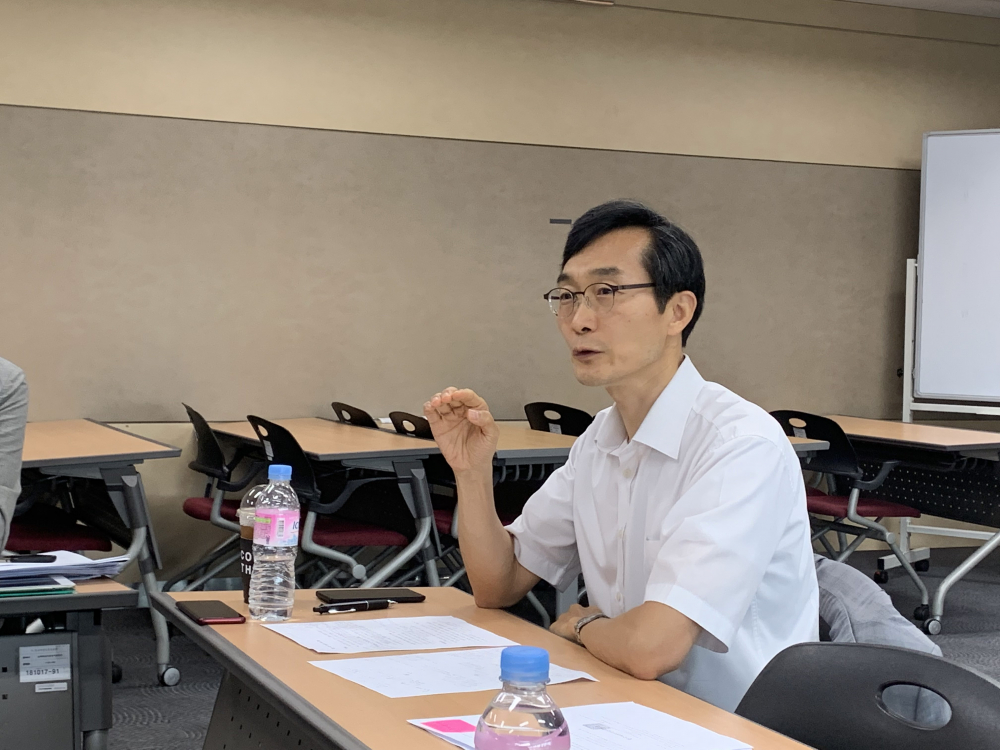
Nam Kijeong
There was the Sasae Proposal, which came out at the end of the Noda administration in 2012. It was a proposal for which the prime minister of Japan would apologize to the victims of the Japanese military “comfort women” in a letter, the Japanese Ambassador to Korea would apologize directly, and the Japanese government would provide funding for the humanitarian measures with its budget. Indeed, this was a substantial progress, but Korea’s position was that it did not find anything that indicates the Japanese government’s acknowledgement of the State Responsibility. So, Korea proposed a ‘Sasae + α’ proposal, including the legal responsibility of the state, but the Japanese government countered with a ‘Sasae – α’ proposal. It didn’t go anywhere at the time, and with the change of administration, the momentum was lost within Japan and subsequently languished.
In any case, the 2015 Agreement, which was based on the Sasae Proposal, omitted the term ‘moral,’ indicating the Japanese government’s acknowledgement of responsibility a little more clearly. Naively speaking, some people even said that this can be considered to have accomplished the three-point set that the civil activists had been demanding, namely ‘acknowledgement of the responsibility, apology and measures from the government budget.’
Of course, there still is a room for different interpretations whether this actually can be recognized as a compensation, but I think we can say that it is a progress because it includes ‘the acknowledgement of the Japanese government of the responsibility and the financial measures from the government budget.’ Moreover, the Sasae Proposal was a proposal that came out of the Noda administration, the Democratic Party of Japan, but the 2015 Agreement was made with the Abe administration, who openly pursued historical revisionism.
The problem is the latter part of the agreement where it included the phrase ‘final and irreversible resolution,’ the issue regarding the Statue of Peace and a promise that Korea will not criticize Japan in the international community related to this issue. These clauses invoked strong backlash in Korea that eventually, the agreement fell apart.
What is the extent of the legal binding force of the “comfort women” agreement between Korea and Japan on Dec. 28, 2015?
Q. As you mentioned, the 2015 Agreement faced a fierce backlash in Korea. Some civic groups even asserted that this agreement had no legal binding force at all. What do the three of you think is the extent of the legal binding force of this Agreement?
Nam Kijeong
I believe that the fact that the foreign ministers of both countries made public announcements means that it has some binding force on the people and the state to some degree. Regardless of our assessment, for the time being, the UN welcomed the agreement. Due to these circumstances, I believe the government did not demand either a withdrawal or re-negotiation.* Of course, I do not think that this agreement is an iron-clad Agreement that no revision whatsoever is allowed. I believe it is possible to lead it to a third resolution through, for example, the reinterpretation of the agreement.
The result of the investigation on the ‘comfort women’ Agreement on Dec. 28, 2015 by the Moon Jae-in administration: In December 2017, the Korean President Moon Jae-in expressed regrets over the results of the investigation, which confirmed that there were material defects in the process and substance of the “comfort women” negotiations between the governments of Korea and Japan in 2015, and raised the need to establish the follow-up measures under the principle of a victim-centered resolution. On January 9, 2018, the following month, Foreign Minister Kang Kyung-wha expressed that “the 2015 Agreement, which did not properly reflect the victims’ wishes, cannot be a genuine resolution for the Japanese military “comfort women” issue,” but Korea will “not request a re-negotiation from the Japanese government, considering that the 2015 agreement was an official agreement between the two countries.”
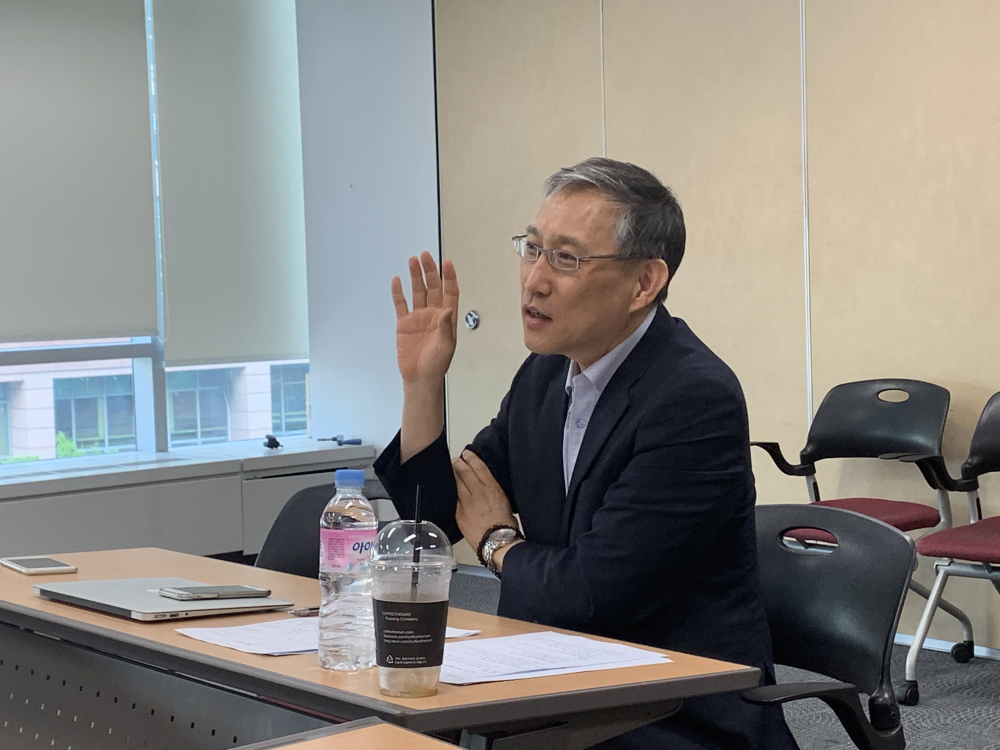
Cho Sihyeon
I have a lot to say about this, and many have already written about it. If I may add some fresh perspectives, I’d like to talk about how the victims’ demands for their rights have been treated by both governments since the liberation up until now. I think this represents the historical nature of this issue, as well as an indicator of the direction that it should take from now on. As you know, after Japan lost the war, soldiers, civilians attached to the military, workers and “comfort women” victims returned from the battlefields overseas. At that time, the Korean workers in Japan formed the General Association of Korean Residents in Japan (GAKRJ) to figure out ways to return home and the livelihood-related issues. However, without a government (to represent their interests), it probably was ineffective for the victim groups to advocate for their interests. In Japan, there are traces that the returnee groups, such as GAKRJ, etc., negotiated with the US military government to demand accountability for the unpaid wages, ill-treatments, etc. These people continued to claim their rights from the US military government and the Rhee Syngman administration after their return to Korea. This became one of the tasks the Korean government needed to resolve after 1949, and it continued to the conclusion of the 1965 Agreement through official discussions on the normalization of diplomatic relations with Japan after concluding the Treaty of Peace with Japan in 1951.
Here, the victims were in fact, ‘laborers,’ the proletariat. As they positioned at the bottom of the hierarchy, it is highly likely that they were not the top priority. From the perspective of the victims, the process in which they are excluded in this fashion is continuing to the present day. The idea that their rights have been suppressed for all this time is my hypothesis, which must be proven. I believe the “comfort women” agreement in 2015 is connected to the manner in which the victims of Japan’s history have been treated by the Japanese or the Korean government in the long period of time after the liberation.
We were under a dictatorship in 1965. People rose up against the 1965 Agreement between Korea and Japan, but it was executed. However, among the issues that had not been resolved by the Agreement, Korea and Japan came to an agreement regarding the remains. This indicates that not every issue has been resolved with the 1965 Agreement. I think basically the Japanese position has been, and still is, to approach those issues from a humanitarian point of view, not from a legal point of view.
In the meantime, during the late ‘80s, the issue of atomic bomb victims was raised by the visit of Roh Taewoo to Japan and some support was provided by the Japanese government, which was based on the humanitarian reasons. I also consider the Asian Women’s Fund for the “comfort women” issue in the ’90s a humanitarian approach, unrelated to the 1965 Agreement, rather than a legal resolution. Japan, particularly in the international community, argues moral responsibility. Thus, Japan’s basic position and campaign is that any and all legal issues have been resolved through the 1965 Agreement but Japan fulfilled its moral responsibilities through its additional effort – the Asian Women’s Fund.
If we were to look at the 2015 “comfort women” Agreement from this context, the term ‘law’ was not used even once. Moreover, the 2015 Agreement did not ask the legal definition of the actions committed against the “comfort women.” In that respect, it is deeply problematic that the legal responsibility has been erased. The 2015 Agreement was made through an announcement of the Foreign Ministers of both countries, without an official written agreement. And then, the two leaders of the two countries confirmed its content through a telephone call. As all processes were conducted orally, the agreement was basically an oral agreement. Of course, oral agreement can be made between governments or states. Therefore, this may be regarded as an international agreement. However, legal agreements, meaning treaties, are agreements made under internal law, and therefore, it must include legal elements which are absent in this case. So, it created a huge controversy in Korea as soon as the agreement was announced, and some politicians argued that it needs to be ratified at the National Assembly. Some civic groups said that it may not have any legal binding force because it was a political agreement, and not a legal treaty.
International response to the agreement was not all positive, either. Unlike the initial global reaction, such as welcoming comments from the UN Secretary-General, Ban Kimoon and the US government, various UN human rights bodies began to raise concerns about the agreement that the agreement was insufficient in terms of the human rights of the victims. There were various recommendations to amend it.
Nam Kijeong
I fully recognize and understand that point. However, even the UN human rights bodies, which raised concerns and issued recommendations that are frequently quoted by Korean advocate organizations, are taking the stance that the Agreement has sufficiently been established and therefore, they seem to demand a victim-centered approach ‘in the process of implementing the Agreement’, or recommend to make a revision on the “Agreement.” This seems to me that they are only calling for an amendment, and not a negation of the agreement. I believe that the international community recognizes the problems of the agreement that it conflicts with the human rights of the victims, but I think it still acknowledges that the agreement itself exists.
Cho Sihyeon
If I may address the binding force, unless it is a treaty, a state is not bound by it, and therefore, it does not need to comply. Even treaties can be changed. On the media reports, the Japanese government is making excessive comments as if a treaty, once made, must remain immortal, but treaties do change over time, depending on the historical circumstances.
What I believe to be important is that it did not go through the procedure of making a formal treaty, and moreover, the key is its relationship with the 1965 Agreement. If this becomes a treaty, then it results in the amendment of the 1965 Agreement, which isn’t consistent with the basic policy of the Japanese government. From the standpoint of the Japanese government that wants to honor and maintain the 1965 Agreement system, making this Agreement into a treaty is unthinkable. In this respect, it is clear that the Japanese government is stating that the ‘Korea-Japan Agreement is not a treaty.’ I do not think Japan can deny that it is not a treaty. Therefore, it has no legal force. Even if it has a legal force, it is uncertain whether this is an agreement between the ministers, which is an agreement between governments, or an agreement between the president and a prime minister; the head of the states. If this is an agreement between governments, and not an agreement between the states, then, the Park Geunhye administration and Abe administration would be bound by it. If it is a political agreement, then its fate would depend on the fate of the administration that made the agreement. The policies regarding the “comfort women” have been changing, according to each administration. That is why the Moon Jae-in administration can create a policy on the “comfort women” issue, and there are plenty of rooms to make changes.
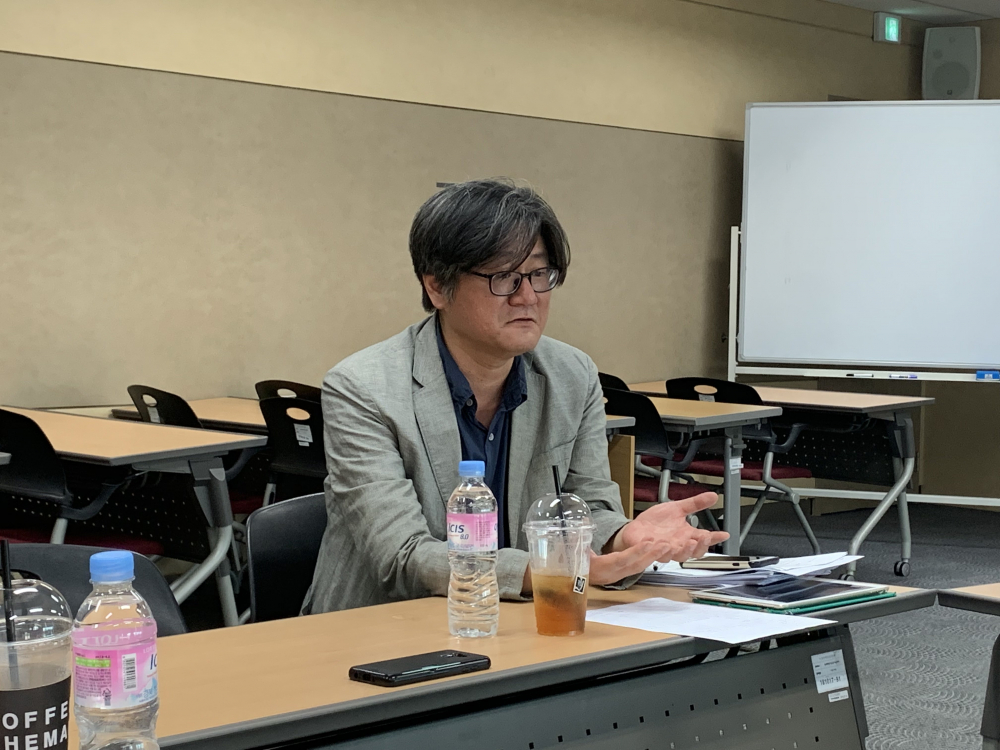
Cho Yanghyeon
Maybe it’s a matter between promise and justice? While there is an intrinsic value in that agreements must be kept (pacta sunt servanda), there is also value in that justice must be the guiding direction. It is not to say one of these is always correct, but that there are choices to be made among the value systems. What would be the logic we can use to counter Japan’s accusations that ‘Korea is a country that changes what has been promised, or a country that fails to keep its promises’? It is to point out the procedural inadequacies at the time that it was a collusion that did not consider the people’s sentiment and the interests of the victims.
I think people had even stronger interest in this issue since the regime has changed due to the impeachment of the President. Korean people were keenly interested in to see whether the justice would actually be served, which would’ve put the Moon Jae-in administration under intense pressure. The political costs for the succession was significant, and at the end of the day, the Moon administration determined that it cannot succeed the agreement, not because of its desires to change it, but because of the circumstances. Thus, the new administration sent a message that it cannot succeed the agreement without sufficient discussions to figure out realistic alternatives.
The point I wanted to raise is whether there were any alternatives or not. I wonder what to think of the position of the current government. Korea has requested an active and sincere response from Japan. However, Japan is avoiding to confront it, complaining that Korea has broken the Agreement. The Japanese Foreign Minister Kisida openly stated to the media, immediately upon his return to Japan after the 2015 Agreement, “All we lost is 1 billion yen.” He made a statement that upset Koreans. In the Japaense parliament, Prime Minister Abe emphasized that Japan did not concede to Korea. So, Japan acted like it has no intention of upholding the Agreement, while demanding us to steadily implement it.
From this context, the response of the Moon Jae-in administration after the Presidential election was disappointing. It would have been better if it suggested specific alternatives to amend the Agreement to fix the procedural deficiencies, but it didn’t. Also, the Reconciliation and Healing foundation is in fact in the process of dissolution. Naturally, there are suggestions to create a new fund, but the government’s position on this is somewhat ambiguous. Because of these reasons, I personally think that we can criticize the government’s responses, more so than the criticism that it didn’t keep the promise at the time.
Part 3: To build responsible dialogue between the two countries to clarify the truth
Related contents
-
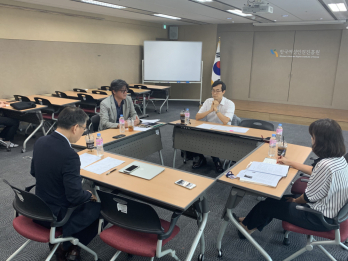
-
The 2011 Constitutional Court’s Decision on the Unconstitutionality of Omission Marks the Turning Point for the “Comfort Women” Issue
-
<Part 1> Panel: Nam Kijeong (Institute for Japanese Studies, Seoul National University)/ Cho Yanghyeon (Institute of Foreign Affairs and National Security)/ Cho Sihyeon (The Center of Historical Truth and Justice)
-
The 2011 Constitutional Court’s Decision on the Unconstitutionality of Omission Marks the Turning Point for the “Comfort Women” Issue
-
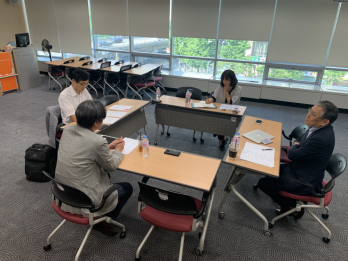
-
To build responsible dialogue between the two countries to clarify the truth
-
<Part 3> Panel: Nam Kijeong (Institute for Japanese Studies, Seoul National University)/ Cho Yanghyeon (Institute of Foreign Affairs and National Security)/ Cho Sihyeon (The Center of Historical Truth and Justice)
-
To build responsible dialogue between the two countries to clarify the truth
-
Writer
Editorial Team of Webzine
-
Editorial Team of Webzine <Kyeol>